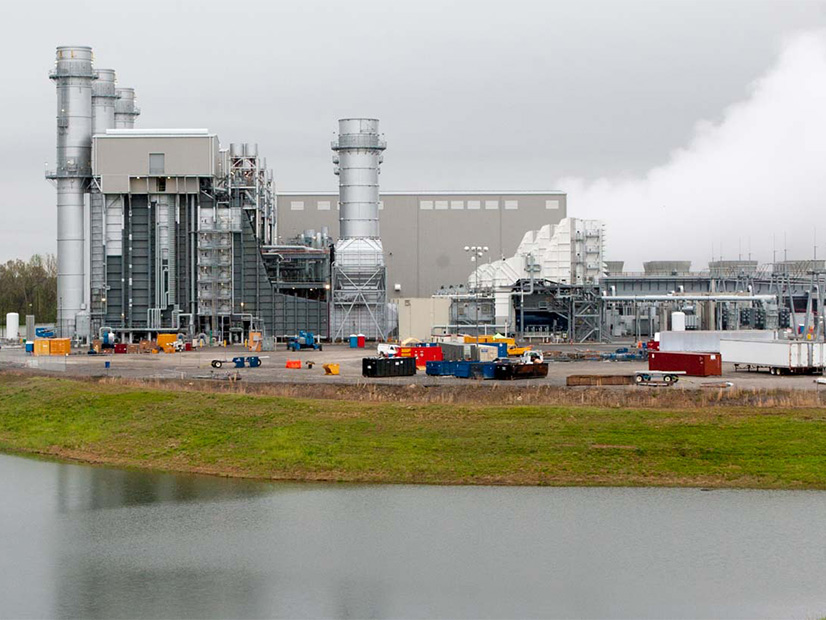The Tennessee Valley Authority insists its second rate increase in two years is necessary to build new generation despite the Southern Alliance for Clean Energy condemning the latest hike as clandestine and used to support fossil fuel investments.
TVA’s Board of Directors on Aug. 22 approved a 5.25% base rate increase that will take effect Oct. 1. Last year, the board greenlit a 4.5% rise in rates. TVA said the latest increase will amount to an additional $4.35 each month for the average residential bill.
“We don’t take this lightly; we know that customers pay bills, not rates. … We recognize that nobody likes increases,” TVA spokesperson Scott Fiedler said in an interview with RTO Insider. “But this is needed to address the tremendous growth that is happening across our region. We need to build capacity now to keep up with demand in the future.”
Fiedler said TVA plans to spend $16 billion through 2027 to add new generation and build out infrastructure to address growth. He said the rate increase will go toward all forms of generation, including new natural gas, renewable energy and investments in the hydropower fleet. But he didn’t elaborate on how much will be spent on each category.
Specific investments in TVA’s future fleet haven’t been revealed. TVA has yet to release its draft integrated resource plan, though Fiedler said the public can expect to see it in the fall. The draft plan was originally expected in the spring.
Fiedler noted TVA went four consecutive years without a rate hike before 2023’s increase. He said TVA is emerging from a decade of virtually zero demand growth.
“But now the growth we’re seeing isn’t stopping.” Fiedler said.
Fiedler said the region’s population is growing three times faster than the national average and by 2050, the University of Tennessee’s Baker School of Public Policy and Public Affairs projects the region’s population will have grown by 22%. He said the region will gain in the long run from the economic boom in the form of additional tax revenues.
“The benefits are there, but we understand it can be a hardship,” he said.
“We have done everything possible to absorb costs as we invest in the reliability of our existing plants, construct new generation to keep up with growth and maximize solar to produce more carbon-free energy,” TVA CEO Jeff Lyash said in a press release after the board approved the increase.
Fiedler said TVA is attempting to blunt the load growth by devoting $1.5 billion to its new energy efficiency program, TVA EnergyRight, which offers rebates for things like HVAC checks, new air conditioning units and attic insulation.
He said TVA’s efficiency goal is to offset about 30% of the new load coming online over the next decade. He also said TVA has pledged to reduce its internal costs by $900 million over the next three years.
Fiedler also noted that TVA has applied for a grant through the Department of Energy’s Grid Resilience and Innovation Partnerships to support a new transmission project to transport renewable energy from the Midwest into the Valley.
By all appearances, TVA’s IRP will hinge on new natural gas generation. TVA has announced it will replace two coal units at its 2,470-MW Cumberland Fossil Plant with a 1,450-MW natural gas plant. Early this year, FERC approved a pipeline meant to feed the plant, although TVA has said its decision to build the gas plant isn’t final. (See FERC Approves Pipeline to Supply New TVA Cumberland Gas Plant and TVA’s Cumberland Coal-to-gas Plans Press on over Resistance.)
Several clean energy organizations and two Tennessee congressmen have criticized TVA’s IRP process as secretive, with little public analysis and inadequate opportunities for public influence. (See Tenn. Congressmen Introduce Bill to Make TVA IRP Process More Public.)
The Southern Alliance for Clean Energy (SACE) said TVA’s rate increase was likewise shadowy and emblematic of a “broken oversight process.” It said board members allowed the hike “without any public documentation showing why the increase is needed or how those additional revenues will be spent.”
“Only in the Tennessee Valley could a major utility raise rates without public scrutiny of financial documents,” SACE said in a press release, speculating that an “expensive gas expansion is a likely culprit” behind the increase.
The nonprofit said TVA’s rate increases this year and last are “strategically set just below a 10% threshold that would trigger renegotiation of hundreds of power supply agreements with local utilities.” It bemoaned the fact that the federal utility’s rate increase was not subject to independent regulatory rate reviews by an agency like a state public service commission.
“People across the Tennessee Valley will see electric bills increase because their public power utility has spent their hard-earned money on plans that it refuses to release to the public. But what is perhaps most disappointing is the fact that the people of the Tennessee Valley have never known anything different. They do not know that most utilities must present a detailed case for public scrutiny before raising rates. TVA has a visage of public power as a federally owned utility but operates as an unregulated private monopoly,” SACE Research Director Maggie Shober said in a statement last week.



